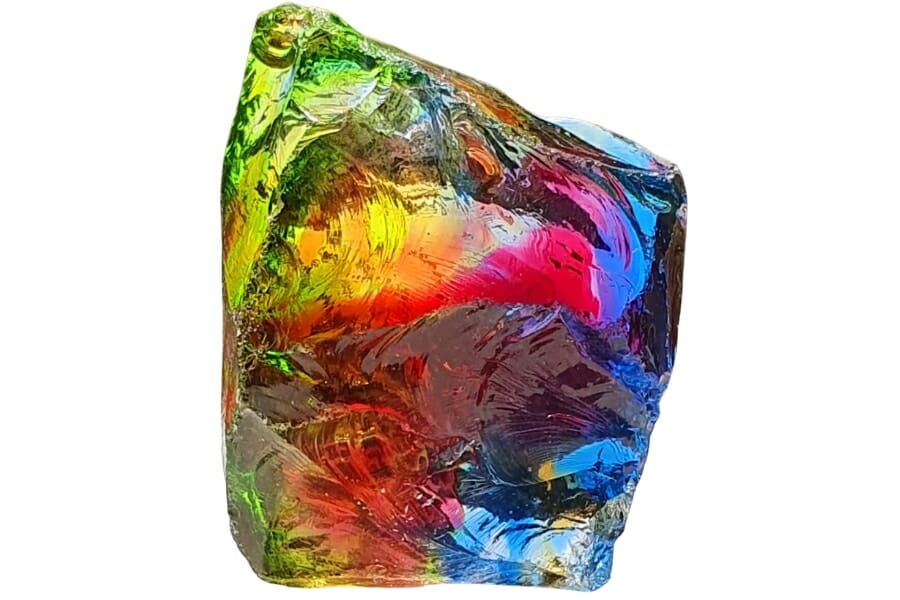Andara crystals have sparked a lot of buzz and curiosity, but what are they really? Imagine colorful, shiny stones you can hold in your hand, said to have magical powers. Sounds exciting, right?
But, before we get carried away, it’s important to dig deep and learn the facts. In this article, we’ll explore what Andara crystals are, where they come from, and how they’re formed.
You’ll also learn what they look like, how to tell if you have a real one, and whether or not they’re actually valuable. Spoiler alert: The science might surprise you!
What Andara Crystals Are
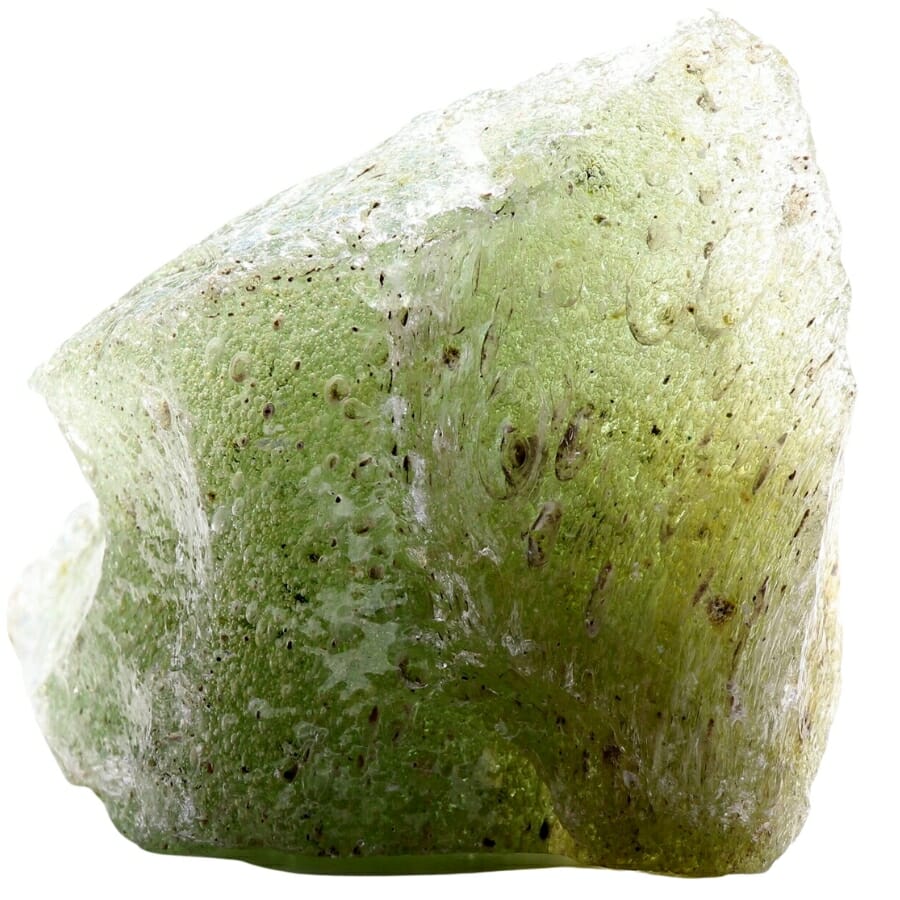
Andara crystals are colorful, eye-catching stones that many find beautiful and mysterious. They come in vibrant colors like blue, green, pink, and even multi-colored.
But here’s the interesting part: These aren’t really crystals like quartz or diamonds. Most scientists and geologists say instead that Andara crystals are a type of glass called “slag glass.”
Even though Andara crystals are often sold as special, rare, and even magical, it’s important to know that they aren’t really crystals.
They don’t have a chemical formula or a well-organized structure like real crystals do. Instead, their composition can be very different depending on what was in the melted material.
How Andara Crystals got their name
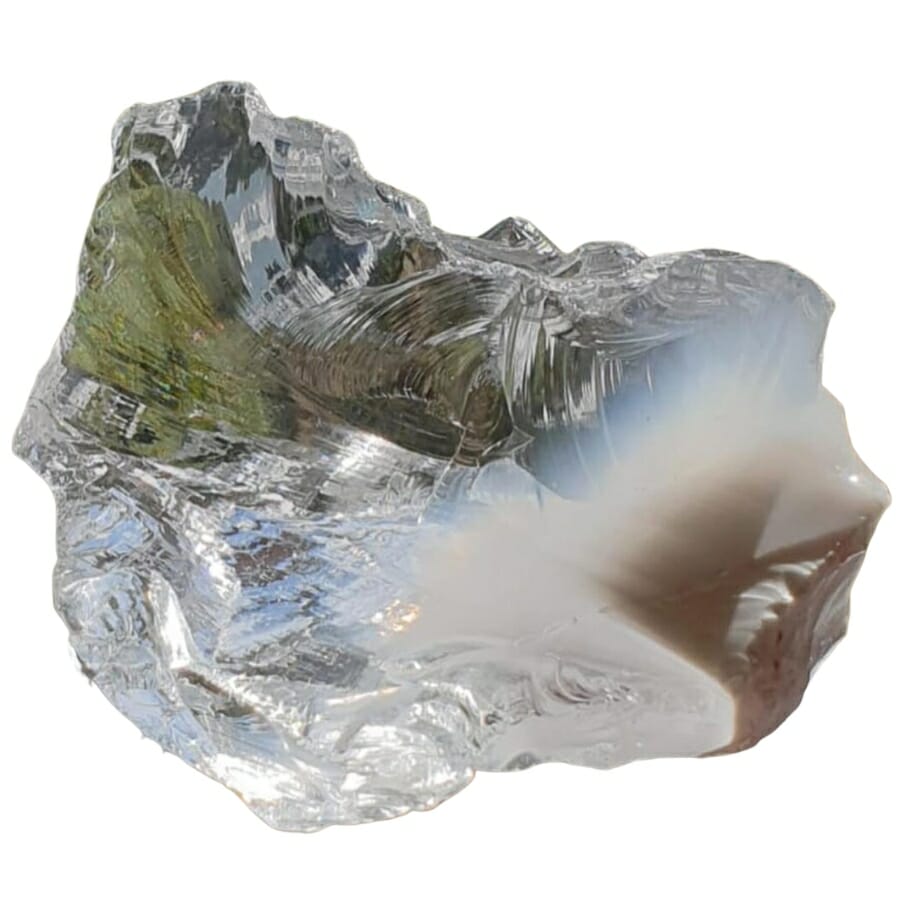
The name “Andara” is quite new. It comes from how these things are sold, not from an old tradition or a scientific way of naming things.
The story goes that these colorful pieces of glass were found on the property of Lady Nellie who lived in California. She thought they were spiritually important and called them “Andara crystals.”
The name “Andara” has nothing to do with geology. The name is meant to make these pieces of glass sound magical and mysterious. People say that Lady Nellie was inspired by the idea that these “crystals” were linked to the lost city of Atlantis or other ancient civilizations.
The name stuck, and now the pretty, colorful pieces of glass that some people believe have healing or spiritual powers.
So, the name “Andara” has less to do with science and more to do with marketing and telling stories. It makes the glass sound unique and foreign, which has helped make it popular in some circles.
Are Andara crystals natural
No, Andara crystals are not naturally occurring like other crystals, such as quartz or amethyst. Instead, what people call “Andara crystals” are usually made from slag glass.
What’s special about Andara crystals
People’s stories about them and how they make some people feel make Andara crystals so special. People who believe they have magical or healing powers often call them crystals, even though they don’t form in nature.
The colors of the Andara crystals also make them stand out. They can be blue, green, pink, yellow, or more than one color.
This makes them stand out and look beautiful. Some people like to put them in jewelry or around their homes to make them look nicer.
How Andara Crystals Form
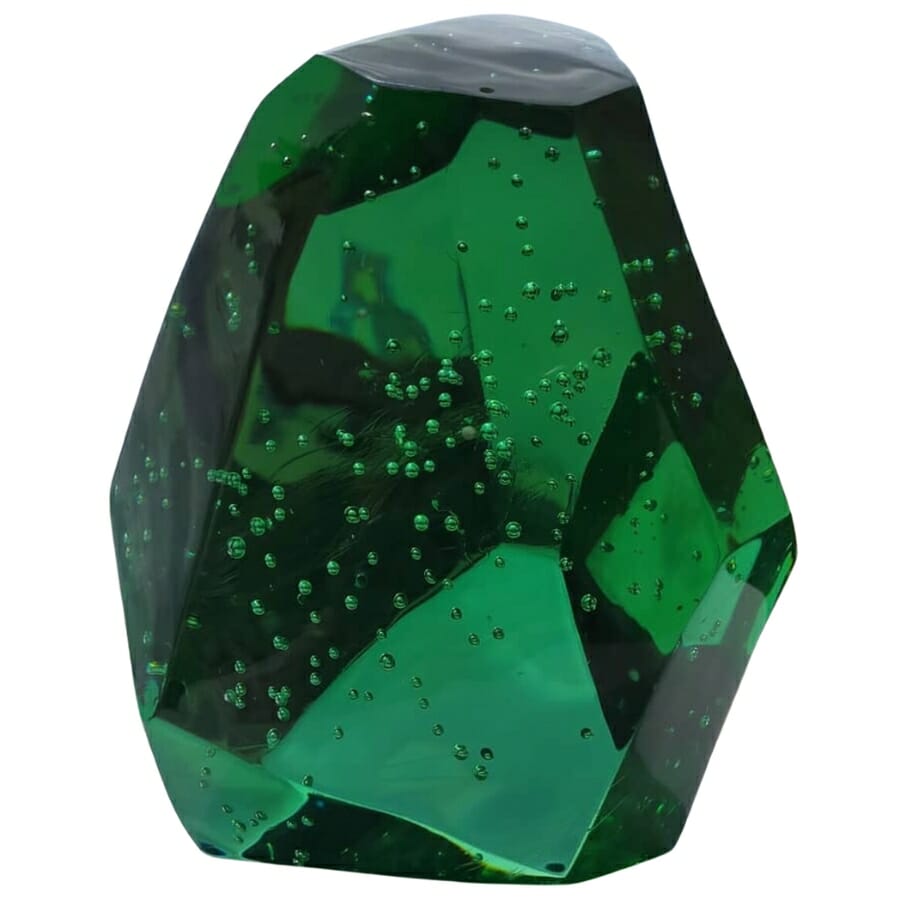
Andara crystals are not naturally formed on Earth like many other crystals, such as quartz or amethyst. Instead, they come from a human-made process.
Here’s how it happens: In factories where metals are melted to create products like car parts, there’s a waste product called “slag glass.” Think about a factory where car parts and aluminum cans are made.
Most of the time, this slag comprises different elements and compounds, such as metal and glass. When it cools down, it gets hard and forms chunks of different colors.
Depending on what was melted in the first place, the colors can be different. For example, if copper was part of the original mixture, the slag glass might have a blue or green tint.
What Andara Crystals Look Like
From the outside, it’s not always easy to tell if you have an Andara crystal, but there are ways to identify it. Here’s what they look like outside and inside, and rough and polished:
Rough Andara crystals
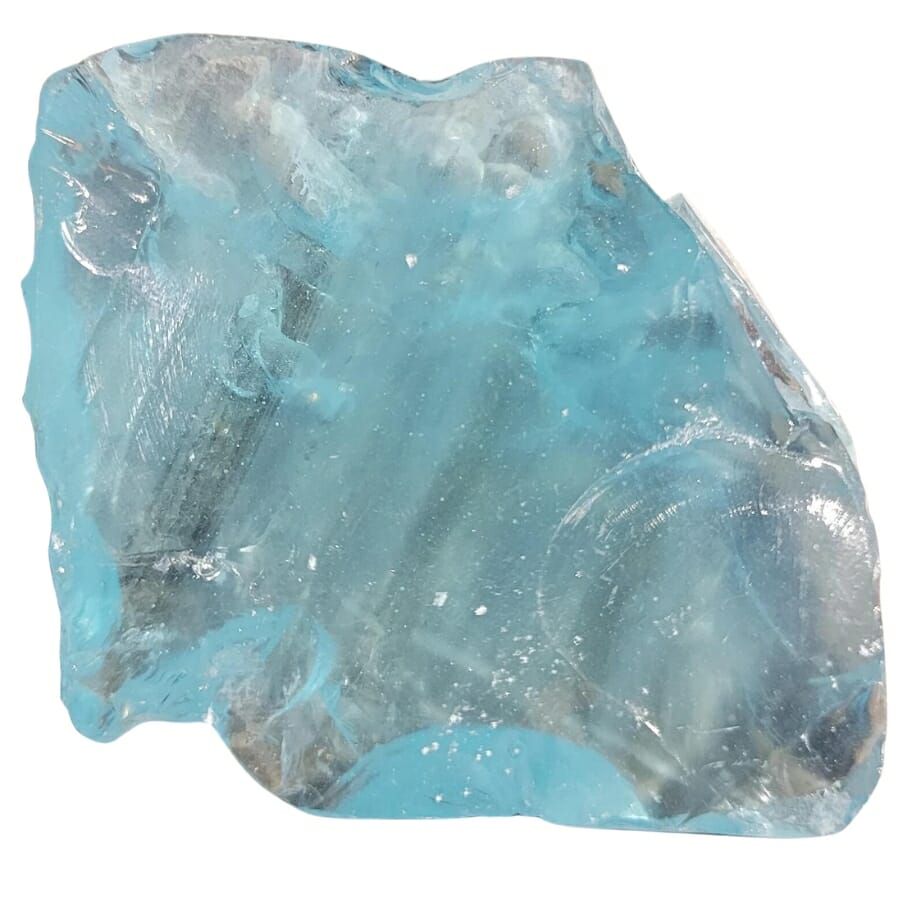
The rough, unpolished Andara “crystals” look very different than the smooth, shiny ones you might find in a store. In their natural state, they can look like colorful chunks of glass with uneven surfaces or sharp edges.
The colors can be very bright, with blues, greens, pinks, purples, and yellows among them. Sometimes, you might even see pieces with more than one color.
When not polished, the surfaces of these pieces can look cloudy or frosted instead of clear like some natural crystals.
You might also notice that they don’t have regular shapes like points or facets like real crystals do. Instead, they can look more like rocks you might find on a hike.
Even though they’re not polished, these rough pieces can still catch the light in interesting ways, making them sparkle or glow in ways that are pretty to look at.
Some people like these rough, unpolished Andaras because they feel more “natural,” even though we know they’re made from factory waste.
Cut or polished Andara crystals
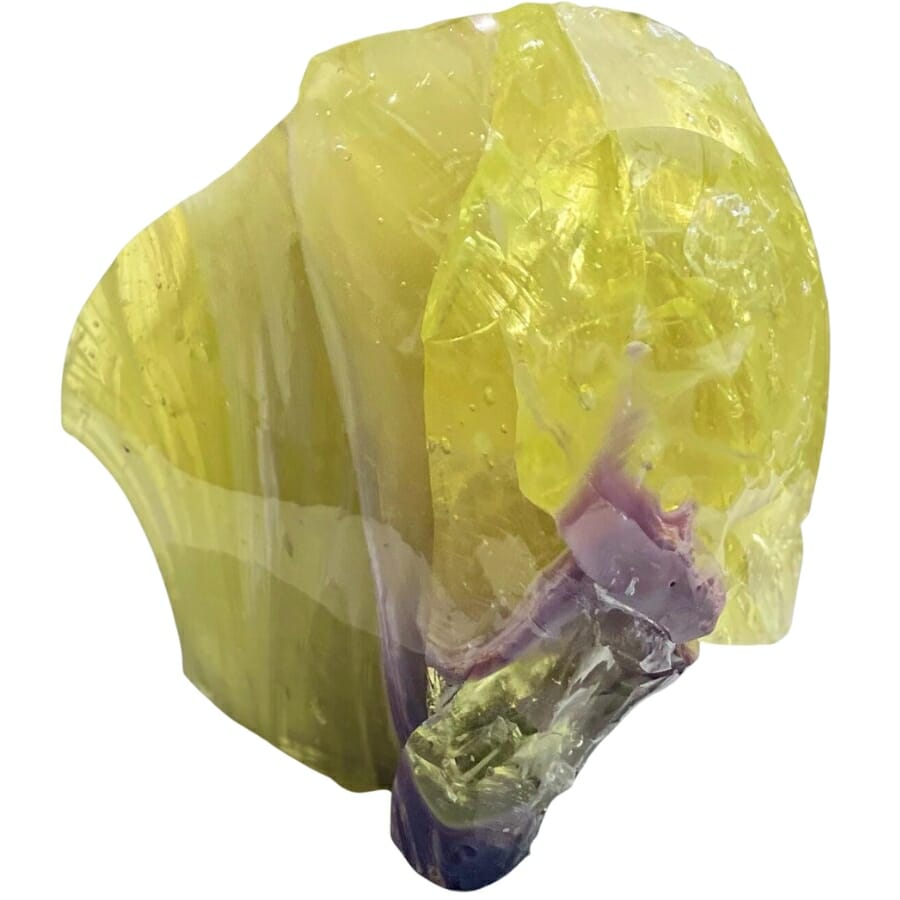
Cut or polished Andara “crystals” are really something to see! When Andaras are cut and polished, they become super shiny and even more vibrant.
Andaras that have been polished can also come in different shapes. Some might be round, like a marble, and others might be pointed, like a small mountain. There are also flat pieces that you can put in your pocket or use as decoration. People sometimes even turn them into necklaces or earrings.
Because the surface is smooth and shiny, the colors stand out even more. So, when you polish a blue Andara, it can look like a piece of the ocean. Or, if it is pink, you might think of a sunset.
They are often used where people want to add beauty and a sense of mystery, like a display in a room or a main collection piece.
Always Confirm Access and Collection Rules!
Before heading out to any of the locations on our list you need to confirm access requirements and collection rules for both public and private locations directly with the location. We haven’t personally verified every location and the access requirements and collection rules often change without notice.
Many of the locations we mention will not allow collecting but are still great places for those who love to find beautiful rocks and minerals in the wild without keeping them. We also can’t guarantee you will find anything in these locations since they are constantly changing.
Always get updated information directly from the source ahead of time to ensure responsible rockhounding. If you want even more current options it’s always a good idea to contact local rock and mineral clubs and groups
How To Identify Andara Crystals
Identifying Andara crystals isn’t always easy, whether you’re out in the field looking for them or already have a few specimens that look the same. Here are a few things you can do to simplify the process.
Identification from the outside
Here are some ways to tell what they look like from the outside:
Color variety
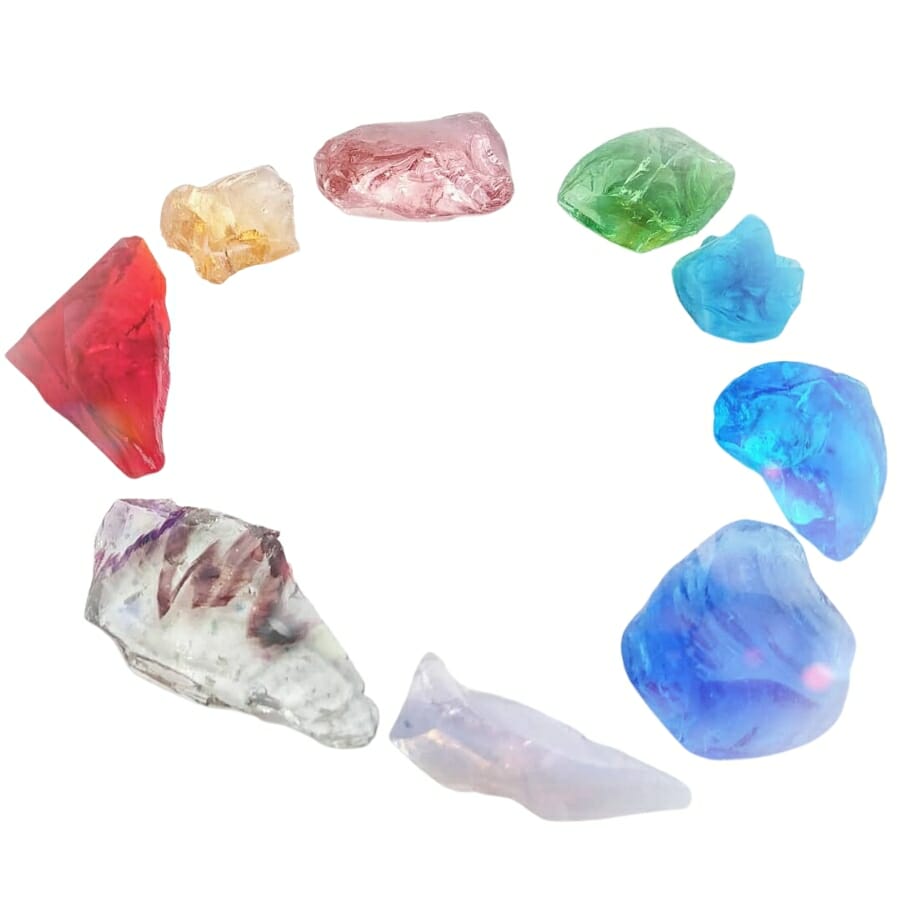
The bright colors of Andara crystals are among the first things you will notice about them. They can be blue, green, pink, yellow, or multiple colors.
Real crystals, like quartz or amethyst, tend to have more natural and less bright colors. So, if you see something with a bright, almost unnatural color, it might be an Andara.
Lack of natural facets
The natural points or flat surfaces on real crystals are called facets. These happen on their own over time. Because Andaras aren’t really crystals, they don’t have these natural facets.
Instead, they might have shapes that aren’t regular, like being round or wavy, which is different from the way real crystals are made.
Translucency
Andara crystals can be partly clear, but most of the time they look cloudy or frosty. This is unlike natural crystals like quartz, which tend to be clearer and see-through. It could be an Andara if the stone is colorful but unclear.
Weight and density
Andara crystals are made of glass slag, so they usually feel heavier and more dense than most natural crystals. If you pick up a piece that feels heavy for its size, it might be an Andara crystal.
Surface texture
Andaras that haven’t been polished often feel more like glass than they do like a natural crystal. Even if they look rough, they might be smoother than you’d expect from natural stones.
Some people say they feel more like sea glass, which is smoothed by water and sand, than a rock or crystal made by nature.
Identification from the inside
Andara crystals are usually easier to find once you slice them in half. You should look for these factors:
No crystal structure
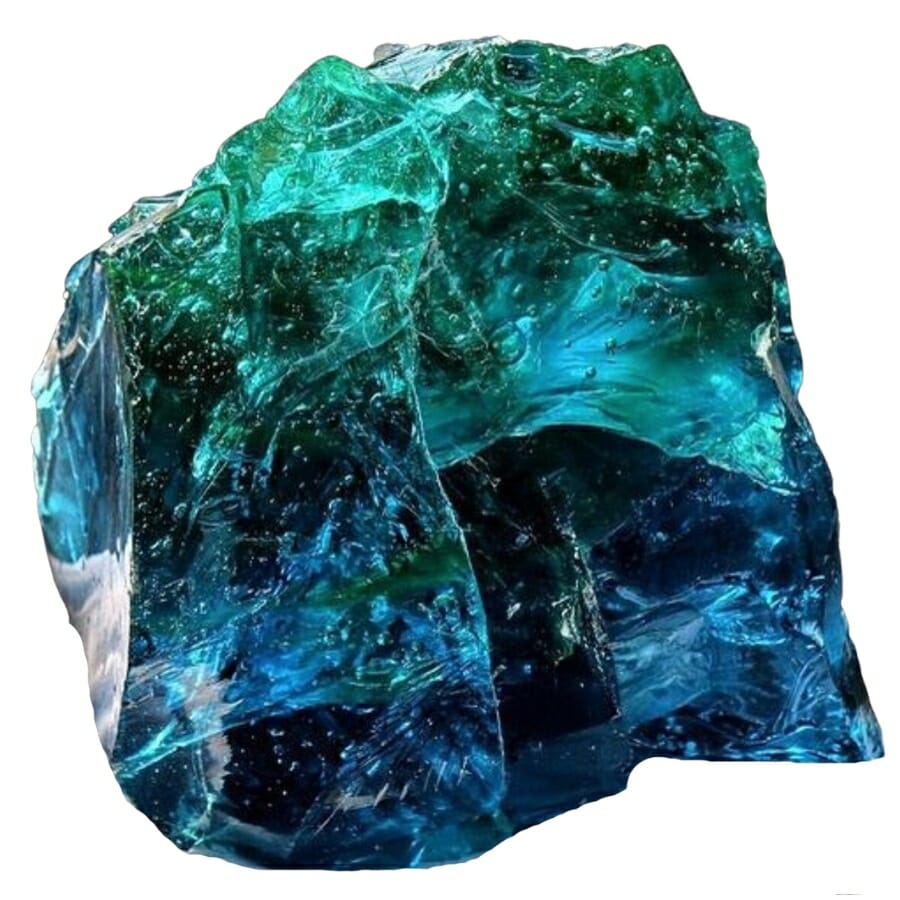
If you broke a real crystal open, you would see that the atoms are arranged in a certain way, like a 3D puzzle that fits together perfectly.
There is no such pattern because Andara crystals are made of slag glass. It’s a big sign that you’re looking at an Andara when it doesn’t have a crystal structure.
Inclusions and bubbles
There may be tiny bubbles or other flaws inside an Andara crystal. These are called “inclusions.” These are usually signs of a quick cooling process, common in slag glass but not naturally formed crystals.
Smooth texture
If you looked closely at a piece of broken Andara crystal, the surface where it was broken would often look smoother than the surfaces of many natural crystals.
The smooth, glass-like texture is another clue that what you’re looking at is not a naturally occurring crystal but rather slag glass.
Identifying Andara crystals using geological properties
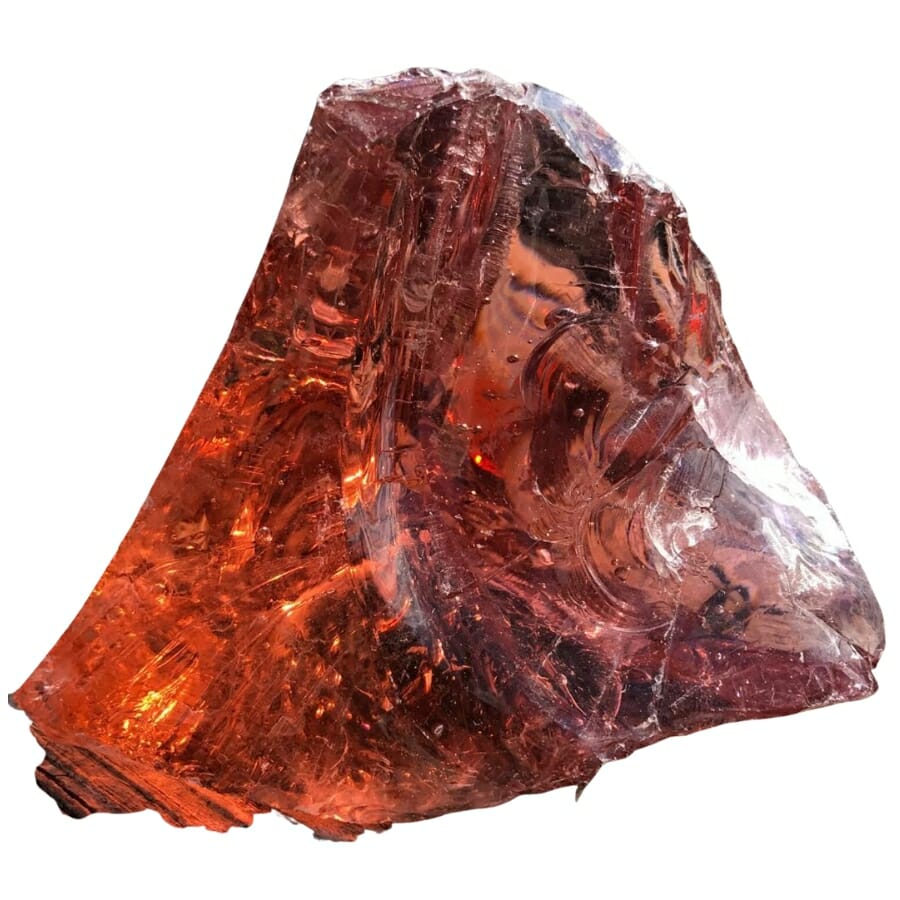
Since any geological phenomena don’t naturally make Andara crystals, it’s challenging to identify their geological properties. Their composition can also vary from one piece to another, making it hard to figure out.
Because these are not naturally occuring, they are mostly found in rock shops and gem stores. If you’re familiar with our guide on where to go rockhounding, you would know that we’ve listed several amazing rock shops all over the state.
If that’s still not enough information, you can also check out the guides we’ve written on where to find crystals near you and try your luck with Andara crystals.
Here are the common properties of Andara crystals:
Chemical composition
It’s important to remember that Andara crystals are not found in nature, so they don’t have the same chemical composition as real geological crystals. Each piece can have a different mix of elements, making it one-of-a-kind but harder to classify scientifically.
Since Andara crystals are technically slag glass, they may contain a mixture of silicon dioxide (SiO2), common in many glass types, along with other elements and compounds like aluminum, calcium, and sometimes trace amounts of metals such as copper or iron.
Color
Andara “crystals” or slag glass, come in a wide range of bright, eye-catching colors. These colors can be any of the following:
- Blue
- Green
- Pink
- Yellow
- Purple
- Red
- Orange
- White
- Black
- Multi-colored
Hardness
Since Andara crystals are slag glass, the hardness of it varies depending on its composition, but it’s generally softer than most natural crystals.
On the Mohs scale of mineral hardness, which ranges from 1 (the softest) to 10 (the hardest), glass usually falls around 5.5 to 6.
Density
Depending on what it is made of, the density of glass can be anywhere from 2.4 to 2.8 grams per cubic centimeter (g/cm3).
It’s important to remember that Andara crystals can vary in how dense they are because their chemical composition can change. This is because slag glass has many different elements and compounds, and each piece could have a different mix of these.
Refractive index
Since Andara crystals aren’t real geological crystals, they don’t have a standard refractive index like natural ones.
Instead, the refractive index of slag glass can be different from one piece to the next, depending on the elements and compounds that make up each piece.
Crystal form
Andara “crystals” don’t have a regular, repeating structure inside because they are made of glass. Instead, they are amorphous, meaning their molecules are more randomly arranged, like the way glass is made.
Luster
A vitreous luster is a property of glass and most transparent or translucent minerals. It makes the material look shiny and reflective, like a window pane or a glass bottle.
Because Andara crystals are made of glass, they tend to have a shine similar to that of glass. This differs from other natural stones or crystals, which can have metallic, pearly, or even resinous lusters.
The Uses Of Andara Crystals
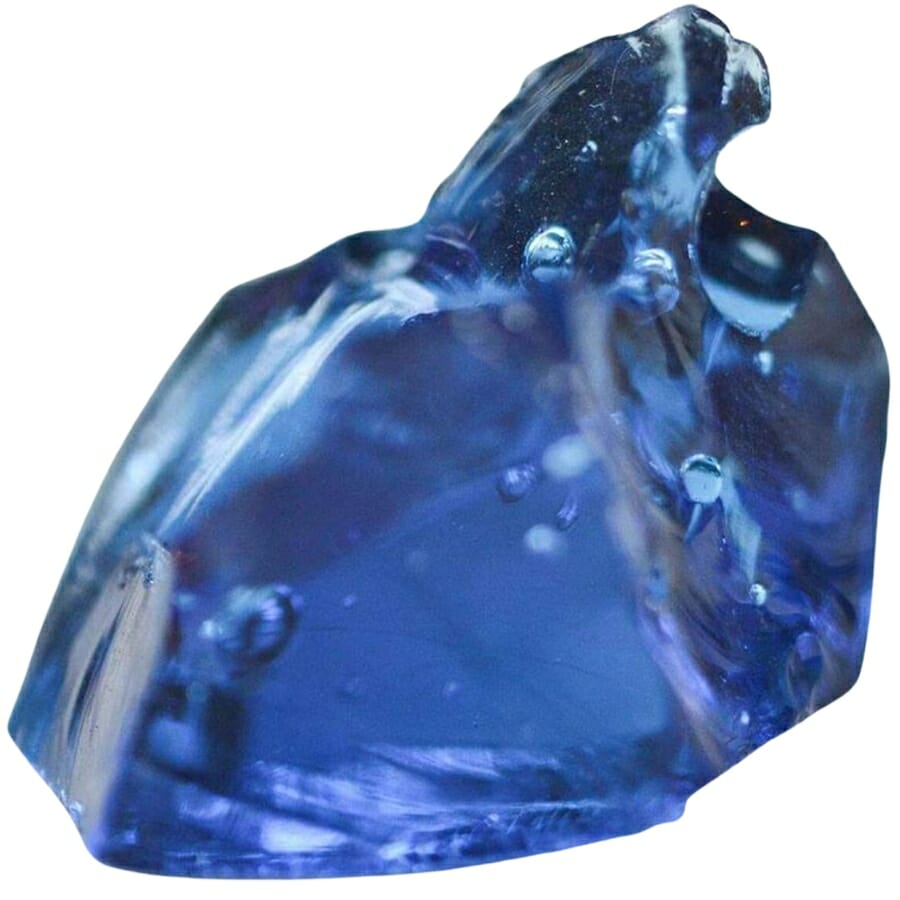
Even though Andara “crystals” are not real geological crystals, they are often used in the same ways as natural gemstones because of their bright colors and appealing looks.
Making jewelry is one of the most common ways that Andara crystals are used. Because they are easy to shape and polish and have beautiful colors, they are often used for necklaces, earrings, and bracelets.
Since they are softer than natural gemstones, they can be shaped into intricate designs. Sometimes they are used to make mosaics, sculptures, or even colorful inlays in furniture.
They can also be used as accents or focal points in interior design to add a splash of color to a room. Since they look like glass, they are sometimes used to make lamps, where they can make interesting patterns when light shines through them.
How Much An Andara Crystal Is Worth
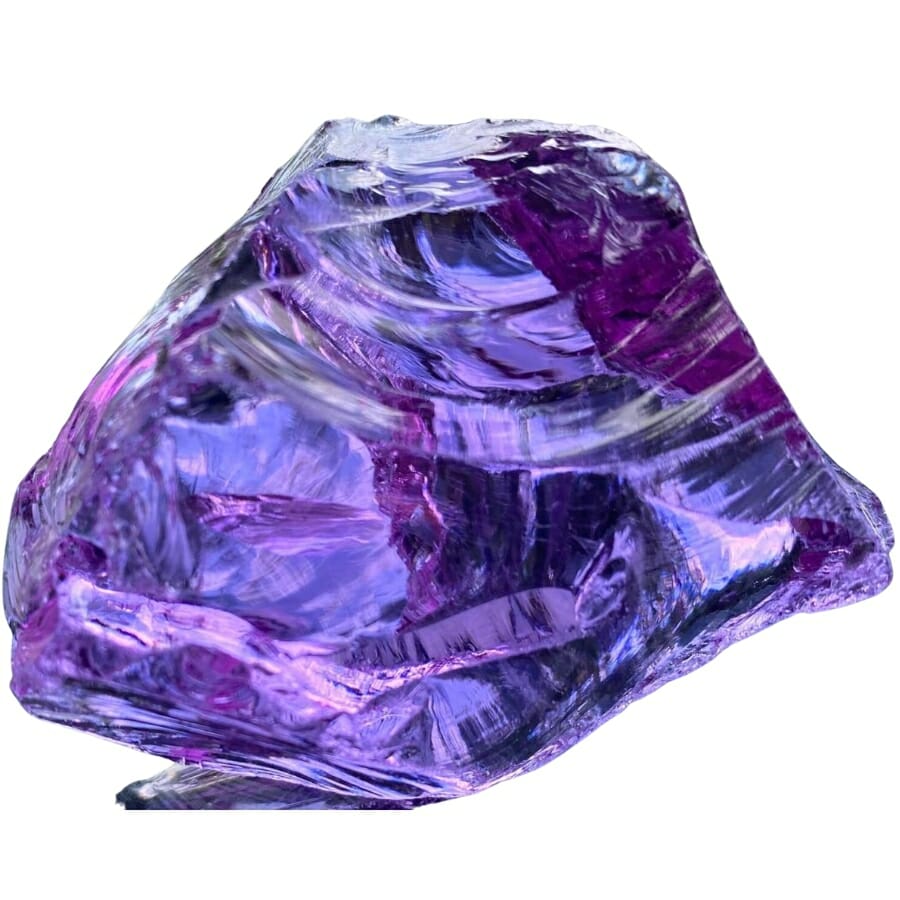
Andara “crystals,” can have very different values depending on their color, size, and overall beauty.
Unlike natural geological crystals like diamonds or emeralds, which have established grading systems and are valued based on color, clarity, cut, and carat weight, Andara crystals don’t have a standard way to value them.
They are often less expensive than many natural gemstones, like diamonds and quartz, but their prices can still range from cheap to very expensive depending on where you buy them and how rare or desirable a certain color or shape is thought to be.
You can check how much a diamond is worth in the article we’ve written so you can gauge the worth of an Andara crystal.
Even though Andara crystals aren’t real geological crystals, their bright colors and interesting shapes still make them interesting to collectors, artists, and others.
Because of their beauty, they can sometimes sell for more when made into intricate jewelry or art.
But the value is often based more on personal tastes and beliefs about the Andara’s beauty or uniqueness than on the mineral’s actual properties.

